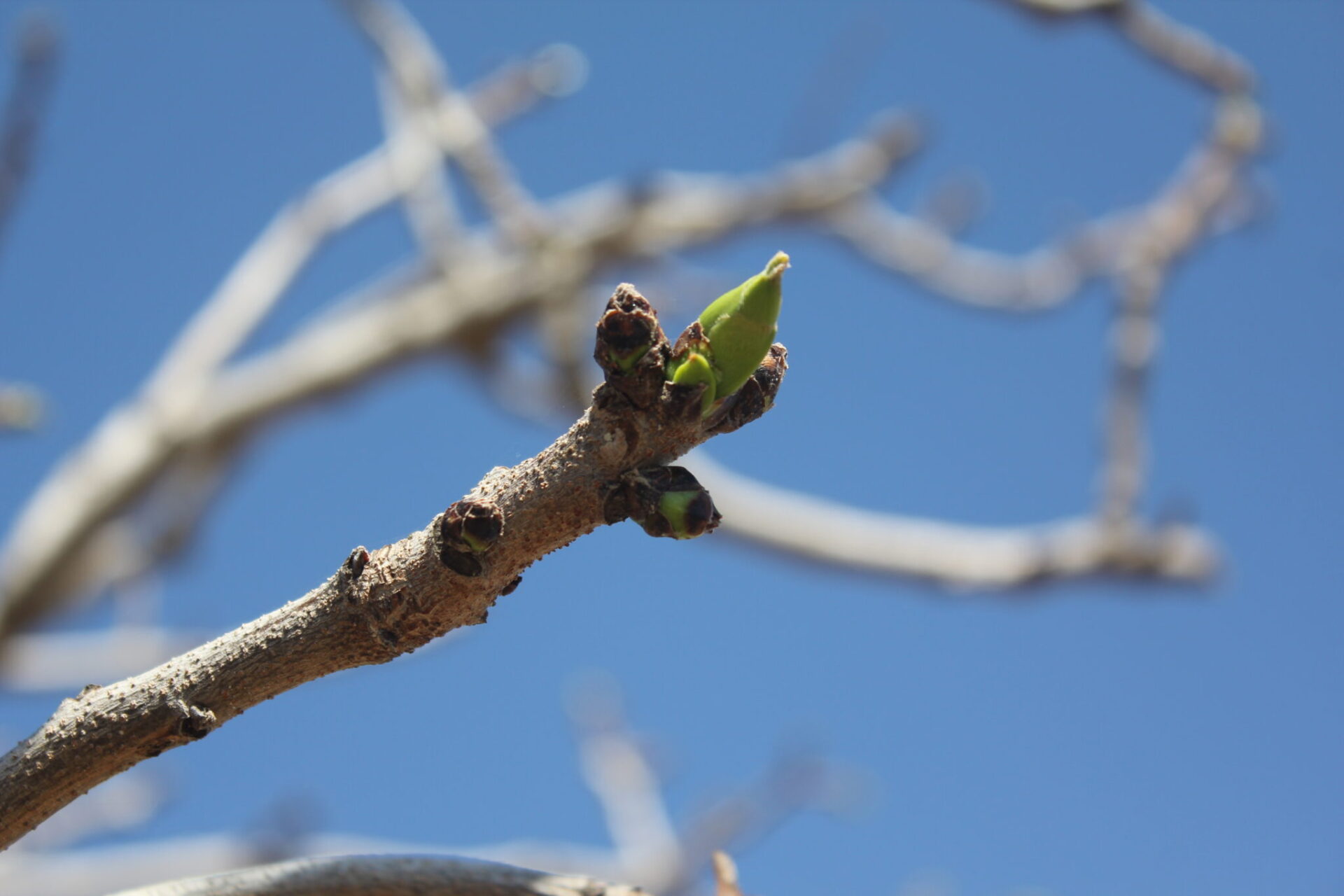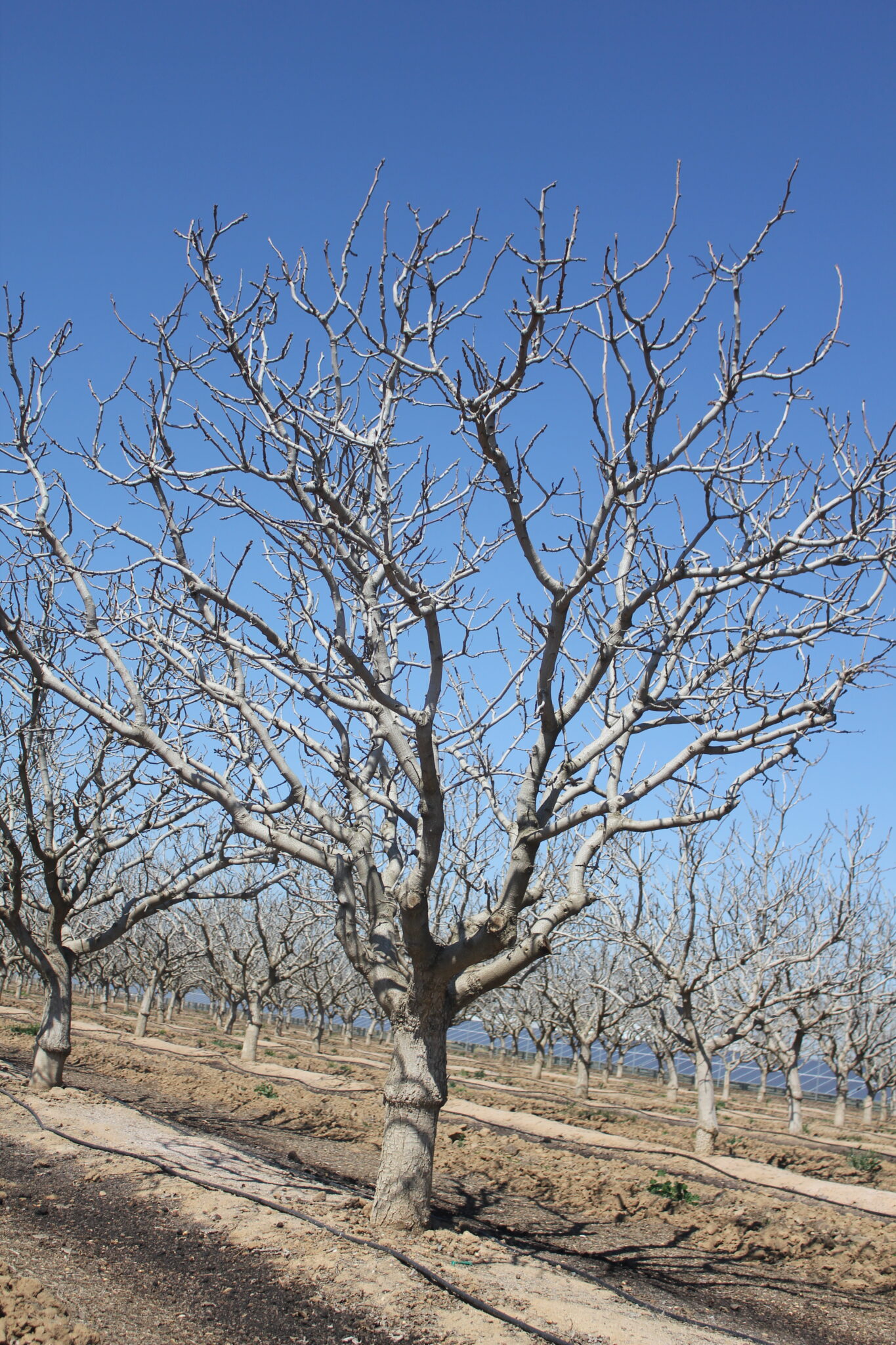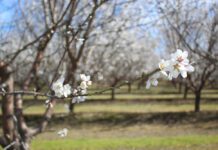
When the UC pistachio breeding program released the new Golden Hills variety in 2005, it was thought by industry leaders that adoption of this new variety would be slow. The Kerman variety was well established and had been the dominant pistachio variety grown in California since the 1970s.
Today, Golden Hills and Lost Hills, a sister variety of Golden Hills, comprise almost a quarter of the state’s 409,000 acres of pistachio orchards. Since 2012, nearly all new pistachio orchards have been planted with Golden Hills or Lost Hills. An early male pollinator, Randy, also released in 2005, is reported to provide adequate pollination for Golden Hills. Randy flowers 10 to 15 days before Peters, which is a main pollinator variety for Kerman.
Why the shift to Golden Hills and how, as more orchards are in full production, are the trees meeting grower horticultural and production expectations?
Grower Expectations
Yes, the trees are meeting grower expectations, said Zack Raven, who has planted Golden Hills and manages pistachio orchards for Kettleman City-based Keenan Farms, one of the state’s largest grower/processors of pistachio. The shift to this variety has come primarily to widen the pistachio harvest window, but growers are finding there are additional reasons to plant Golden Hills.
Raven said the physical attributes of Golden Hills trees include less need for training and pruning.
“It’s more shakable,” Raven said of Golden Hills’ tree shape.
The trees grow in a more upright manner, he said, and need less training to achieve the proper shape. Maintenance pruning is not needed by Golden Hills trees as much as for Kerman trees, which saves on labor costs. Depending on the rootstock used, the trees adapt well to a range of growing conditions.
The trees also come into production earlier than Kerman, Raven said. Kerman has decent production in year seven to eight, but Golden Hills trees will reach that level in year five to six.
“Unless your neighbor has all Kerman and you want to harvest at the same time, then stick with that variety. But if you are developing a large block, go with Golden Hills, you will get more for your money,” Raven said.
Test Plot Performance
Golden Hills and Lost Hills pistachio varieties were chosen for release based on performance characteristics in a test plot budded in 1997 on the west side of the San Joaquin Valley in Kern County. A second test plot budded in 1999 in Madera County showed acceptable performance as did two additional Kern County plots budded in 2002.
In 2007, after six years of yield and nut quality evaluation on rootstock, the UC pistachio breeding program proclaimed that the Golden Hills variety appears to have excellent commercial potential, including less of a tendency to alternate bear.
The UC pistachio breeding program notes that Kerman, with it’s 60-year track record in California, does have strong points. Growers and processors have experience with Kerman and recognize its strong points, including good hull strength and clean, unstained shells.
Jeff Gibbons, general manager at Setton Farms in Terra Bella, said the big advantage on the hulling and processing side is Golden Hills’ early harvest. As more orchards mature and enter full production, the variety is reliably ready for harvest two weeks before Kerman.
Extending the season makes for a more economical harvest, Gibbons said, as harvest equipment, trucks and processing plants will be in use for a longer period.
Harvest readiness is also easier to predict for Golden Hills since it matures in the heat of August. Since most of the nuts split relatively early in the season, maturity progresses quickly and evenly.
Add in a low percentage of closed nuts and blanks in the harvested crop compared to Kerman and Golden Hills is an attractive choice for growers. Harvest data shows a 7% closed nut average compared to 15% for Kerman.
The earlier harvest timing does commence during hot summer temperatures, and that can have an effect on crop quality if the tree cannot be shaken when ready. Hot weather when Golden Hills matures will break down the hull faster, Gibbons said. The hull breakdown can cause shell stain which lowers the value. Gibbons said shell staining could also occur if the nuts sit too long in the trailer. That can be prevented, Gibbons stressed, with a coordinated harvest. Kerman harvest timing is less critical as it matures when temperatures are relatively cooler.
NOW Damage
An earlier pistachio harvest can also help avoid navel orangeworm damage to the nuts. Populations of this pest can build in an orchard over the growing season and the longer the nuts are on the tree, the more vulnerable they are to NOW feeding. When Golden Hills was released, the UC breeding program reported that the early maturity may help the crop escape the third NOW flight entirely, meaning less damage or need for an additional spray application.
Bob Klein, executive director of the California Pistachio Research Board, pointed out another Golden Hills trait that has economic importance given climate change models.
Klein said complete data is not yet available, but Golden Hills does appear to have lower chill requirements than Kerman. UCCE farm advisors in research presentations have cited models that predict warmer and dryer winters in the future. Kerman, during winters with low chill, has exhibited longer and more erratic bloom periods after breaking dormancy. Longer and uneven bloom periods result in uneven nut maturity at harvest. Given the long life span of pistachio trees, there may be an economic incentive to plant trees that can produce a profitable yield in warmer conditions.
Raven said the advantages of Golden Hills pistachio trees are being realized by growers.
“No one is sorry they planted them and they plan to plant more of them,” he said.
















